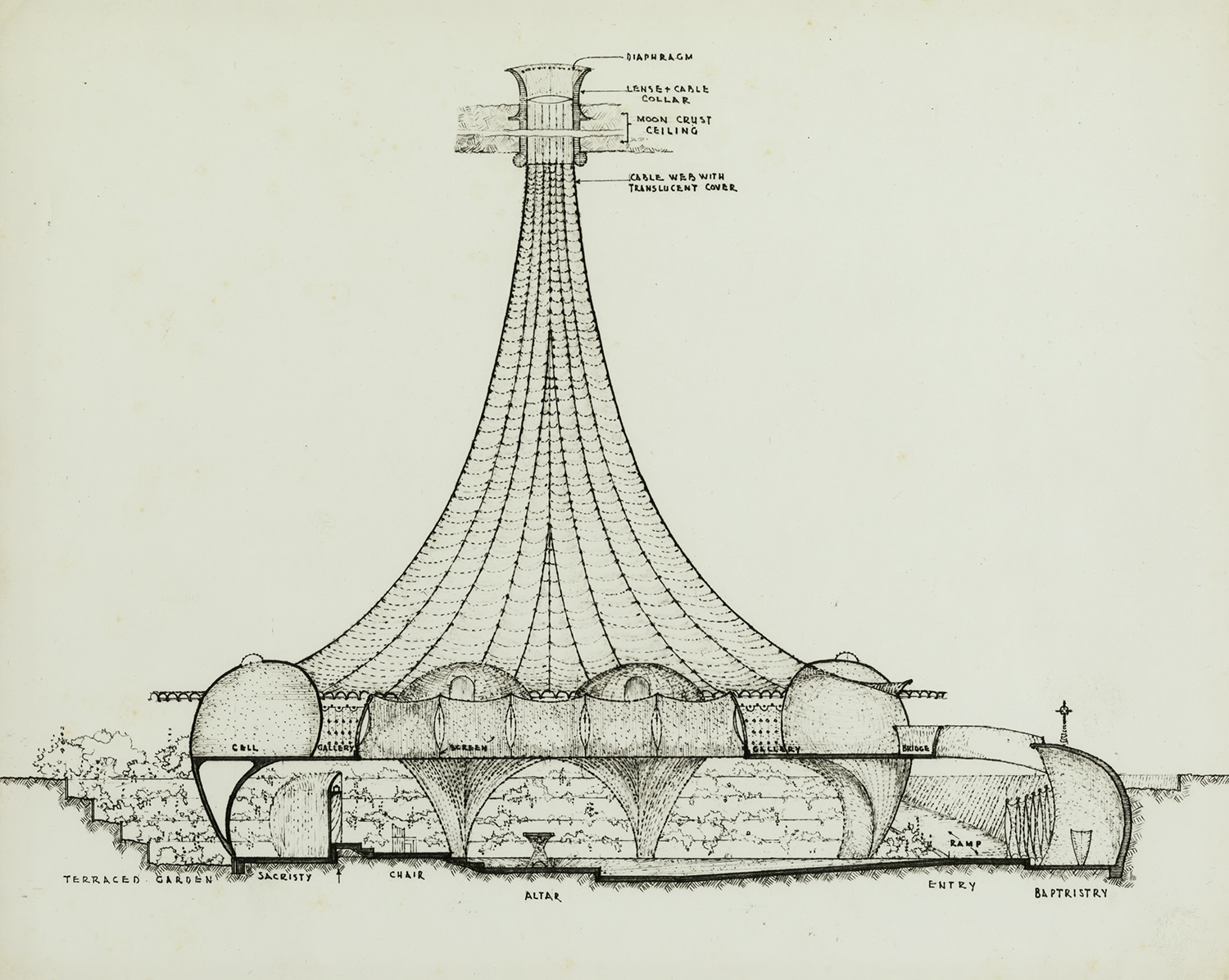During the Space Race, plans were formed for a lunar colony, complete with chapel and clergy!In the latter half of the 1960s, during the height of the space race, it became clear that sooner or later someone was going to reach the moon. With this revelation came the possibility of a lunar colony, which in turn raised the question: What would a lunar church look like?
The notion may seem preposterous in retrospect, but at the time when space travel was most present in everyone’s mind, the religious took the idea very seriously. In fact, by November of 1967, the journal Liturgical Arts published a special issue, “A Chapel on the Moon: 2000 A.D.,” which included architectural drawings, conceptual essays and theological reflections on the subject.
America Magazine reports that the original concept for a lunar church came earlier that year, in an New York Times Magazine article by Isaac Asimov entitled, “Moon Colony 2000 A.D..” Although Asimov was an atheist, he left room in his imagined colony for a chapel. Terence J. Mangan, an Oratorian priest, ran with the idea, envisioning a church for lunar colonists which would bring together personality sciences, physical sciences, and faith.
James T. Keane (whose name is strikingly similar to that of the first captain of the Enterprise) from America Magazine describes what Mangan’s church looked like:
The structure was imagined as a “film sheathed tent defining space and providing visual privacy,” with reinforced concrete behind the film-covered walls. Light cables covered with opaque plastic would descend from the roof of the “tent,” with a small oculus at the top providing natural light and permitting “observation of celestial bodies.” The oculus would be the only point of the chapel touching the surface of the moon, with the entire structure embedded underground in what the authors curiously called “the moon ghetto.”
The church was designed underground to keep with the rest of the colony. Imagined lunar structures are often suggested to be placed at subterranean levels, because it utilizes natural protections of the rocks of the moon. If more of a structure is exposed to open space, then more safeguards must be in place to protect colonists from the unlivable vacuum that waits behind every window.
Mangan was fortunate to have a diagram sketched up by Mark Mills, a protégé of Frank Lloyd Wright. It should be noted that Mills drew up his design assuming that scientific minds will have already figured out the technical aspects of a habitable space environment.

The church would have room for 6 Oratorian priests who would act as counselors as well as spiritual leaders to the people of the colony, which reflects Mangan’s suggestion for the presence of “personality sciences” for the mental health of the colonists.
While the lower level of gravity that is present on the moon could allow unique three-dimensional architectural design, the worship space remains all horizontal, or one the same level. This was in order to offer little distraction to worshipers and keep the church in the same style as the rest of the Universal Church.
The presence of clergy members in a space-based community was considered vastly important to those planners of the 1960s. America Magazine notes that in the same issue of Liturgical Arts, the Rev. Clifford Stevens, a U.S. Air Force chaplain, wrote,
“Priests stood with Columbus and Magellan on the journeys into the unknown, and with the Vikings, too, when they explored the unknown western ocean,” Father Stevens wrote. “Man stands now on the threshold of a far more breathtaking discovery, and so it is not unfitting for the theologian, symbolically or otherwise, to put on a space suit.”
Father Stevens went on to suggest that the presence of a priest would keep in mind that the goal of the colony is the spiritual advancement of the human race, and not just a mad rush for conquest of the stars. He wrote:
“But whatever may be the achievement,” he continued, “the priest will be a part of it. He will inhabit his chapel on the edge of space and help to open the doors to a whole new dimension of human existence.”








